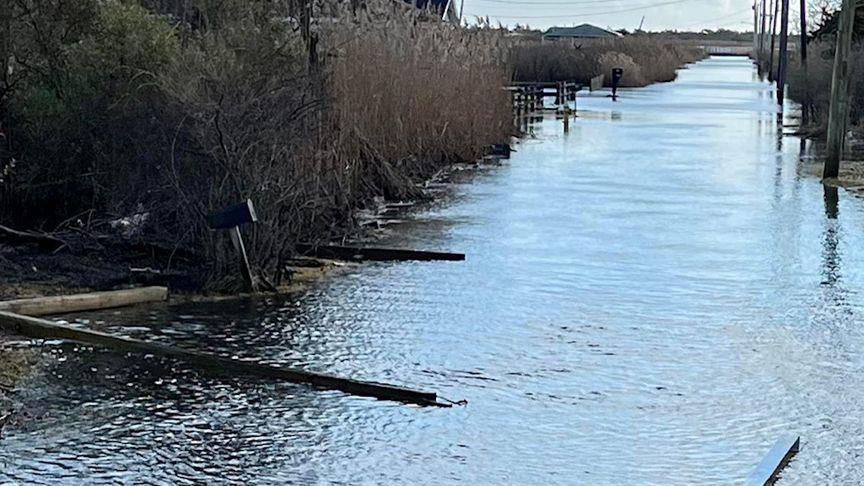Mastic Peninsula residents will get an update this spring on a federal effort to raise homes in the floodplain, the area that was inundated during Hurricane Sandy and the two coastal storms last month, according to the program’s sponsor, the Army Corps of Engineers.
Funding will come through the $2.4 billion Fire Island to Montauk Project (FIMP), a far-reaching plan dating back to 1960 that was designed to protect coastal communities.
A FIMP study identified 3,675 structures in the 10-year floodplain as potentially eligible for elevation, noted Army Corps spokesman James D’Ambrosio. Of these, 245 structures are in a pilot area where 50 homes will be raised by the government. Homeowners can choose to participate if their home is identified in the 10-year floodplain and not already elevated, D’Ambrosio said.
Homes that have previously been elevated or received grant money for elevation by another federal agency cannot be part of the program. Eligible homeowners will remain eligible for elevations in future contracts should they decide not to participate in the pilot, the spokesman said.
“We’ve been promised this for 14 years,” said Frank Fugarino, president of the Pattersquash Creek Civic Association, who expressed concern that the FIMP money could get diverted to other areas. “This is a huge project that involves all kinds of planning and all kinds of contracting. Can you imagine going that far and then losing it?” he asked, pointing to the cancellation of another major project for the area, a much-needed ramp into Mastic from Sunrise Highway.
“We just can’t wait any longer,” said a homeowner at the civic association’s last meeting. “The flooding was terrible during the last two storms. We couldn’t get to our house. We decided to leave; we gave up.”
 |
| Flooding from January storms. Legislator Jim Mazzarella |
"A community meeting by the Army Corps would be a very positive step for the residents who are truly in need of information on this important program,” said Brookhaven Supervisor Dan Panico.
According to D’Ambrosio, “The home-raising aspect of FIMP is a labor-intensive process that requires inspections of every participating home/structure by both Army Corps personnel and Suffolk County. Various details are still being worked out.” He estimated that following outreach and development of design, plans, and specifications, construction is planned to begin at some point in 2026. A similar pilot project is slated for the Frederick Shores Community in Babylon.
The Army Corps said its outreach efforts will also involve the state Department of Environmental Conservation. “We’re very interested in what they have to say,” Fugarino said.
The Army Corps project differs from the “Blue Buffer” plan recently proposed by Gov. Kathy Hochul to buy out homeowners along the coast and let the property return to its natural state. She included $250 million in her budget for the effort statewide, monies that would flow from the state’s $4.2 billion Environmental Bond Act. Following Sandy, there has been a push to remove homes on the Mastic Peninsula that have consistently flooded.
 |
| Target Area Map Army Corps of Engineers |
More information on the FIMP project is available at: https://www.nan.usace.army.mil/FIMPRSN
